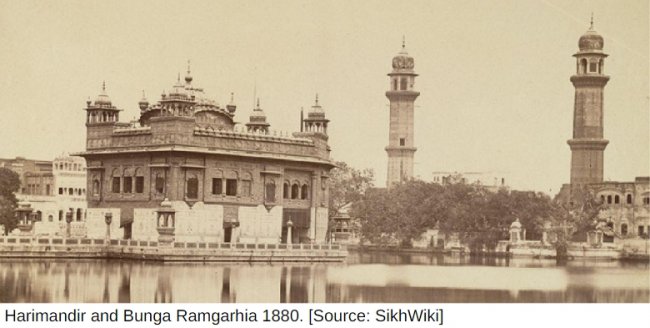BUNGAS The word bunga is derived from the Persian bungah meaning a hospice, or a dwelling place. In the Sikh tradition, the word specifically refers to the dwelling places and mansions which grew up around the Harimandar at Amritsar and at other centres of Sikh pilgrimage. These were primarily the houses built by the conquering sardars and chiefs in Sikh times or by Sikh school men and sectaries. Amritsar housed the largest complex of such buildings.
NIHAL SINGH DAMDAMIAN, 19th century Nirmala saint, a native of Mimsa village of the former princely state of Patiala, received initiation and religious education at the hands of Mahant Dunna Singh, of Uchcha Buriga, a Nirmala sanctuary at Damdama Sahib, Talvandi Sabo, in present day Bathinda district, and became head of the Buriga after the latter`s death. He was respected for his humility and unassuming nature and for the zeal with which he served in the Guru ka Larigar and the loving care with which he looked after the cattle in the shed. In 1860, he with a band of youthful devotees, went to Dera Baba Ram Rai in Dehra Dun and, felling one of the tallest trees in the pine forest of its extensive estate, brought it to Talvandi Sabo carrying it on their heads all the way to Patiala and thence on bullock carts arranged by Maharaja Narinder Singh of Patiala to Damdama Sahib where it was put up as the religious flagmast. Reaching Damdama Sahib, Nihal Singh humbly stood at the entrance where the sangat had deposited their shoes and would not enter the Takht Sahib until he had obtained pardon by paying penalty for having violated the Sikh code of conduct forbidding any dealings with the followers of Baba Ram Rai.



